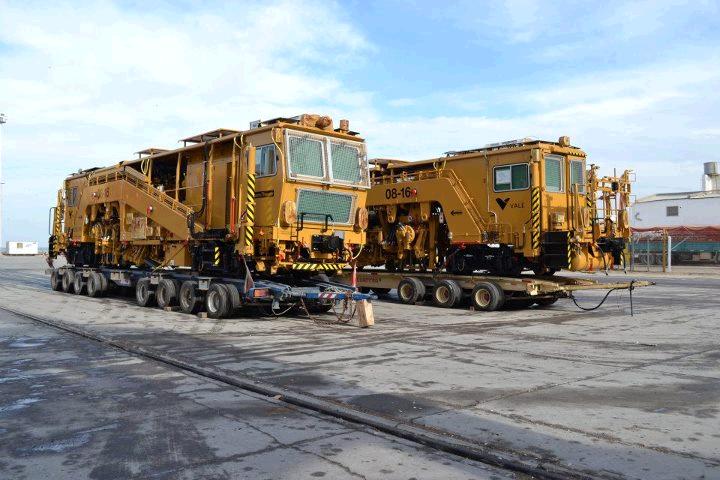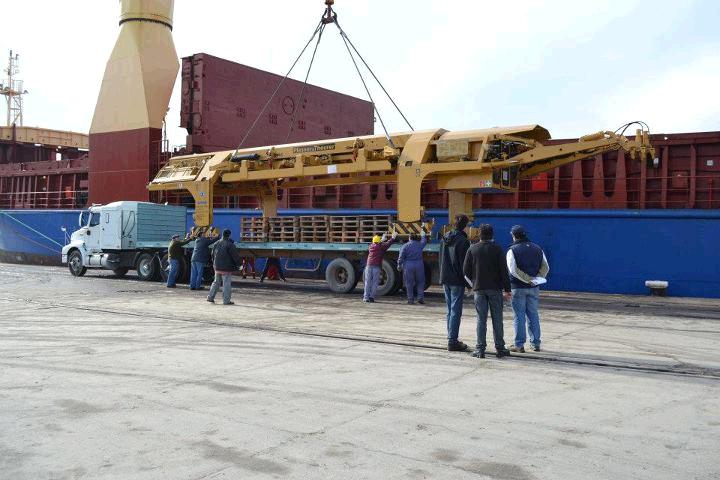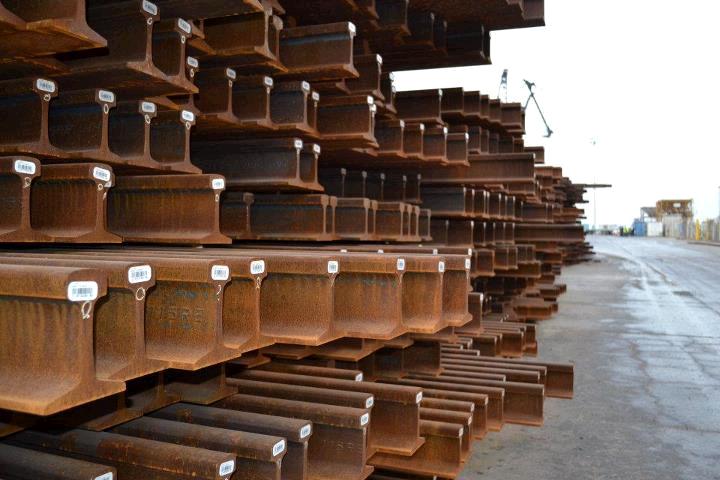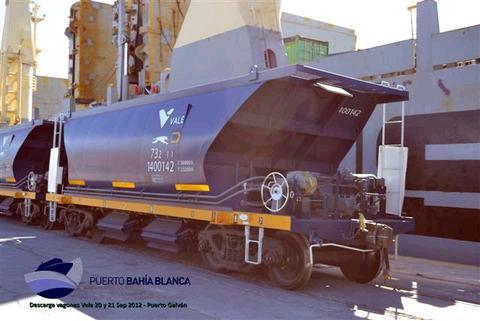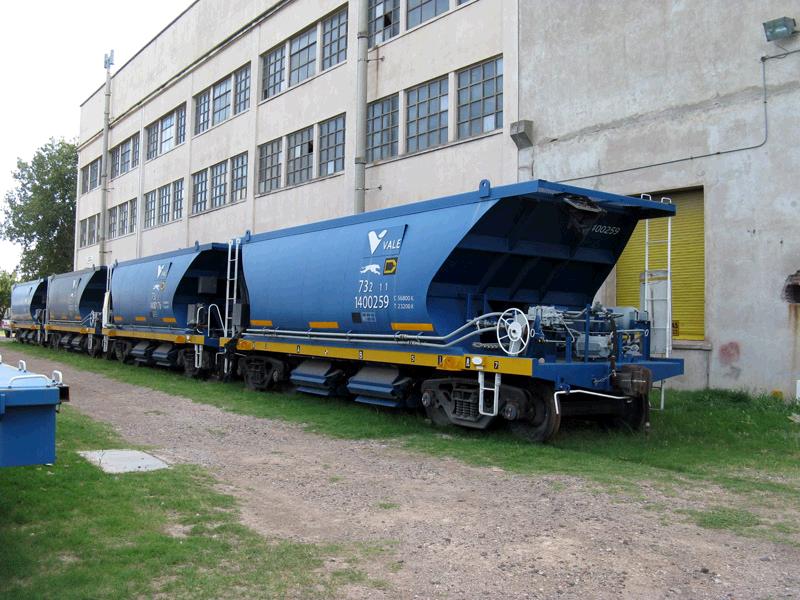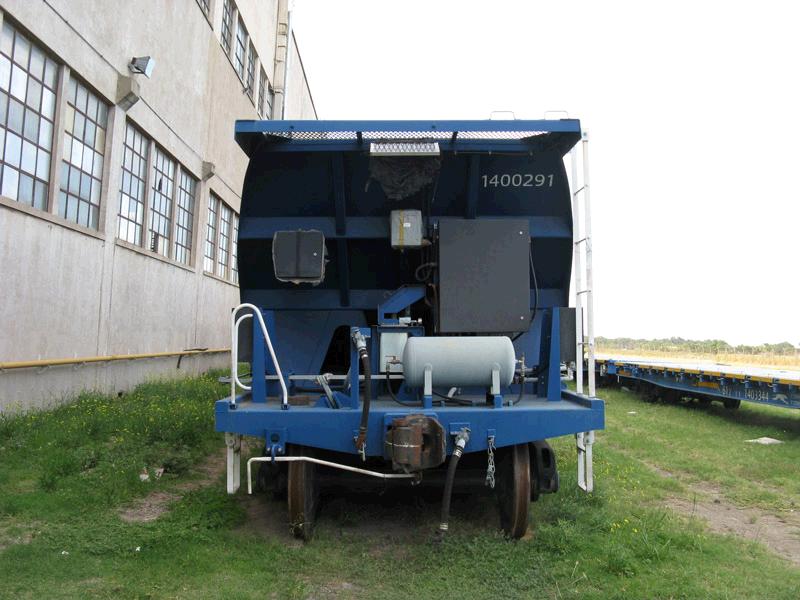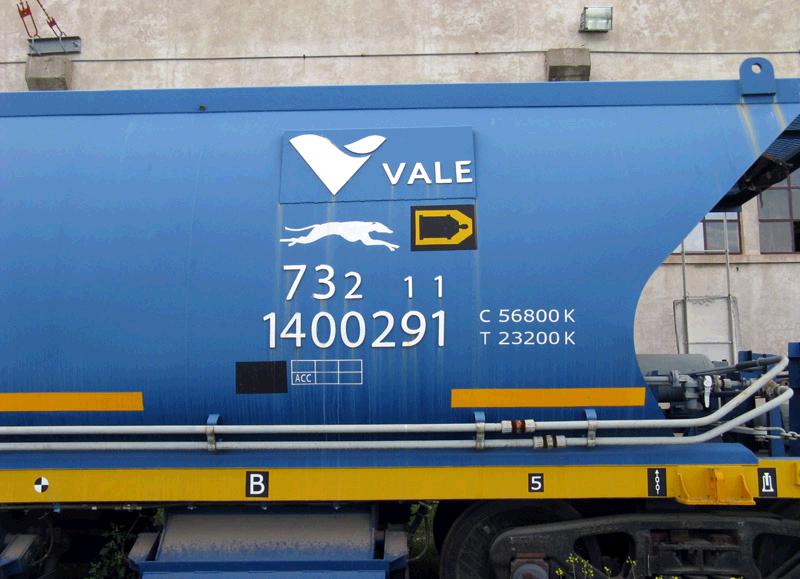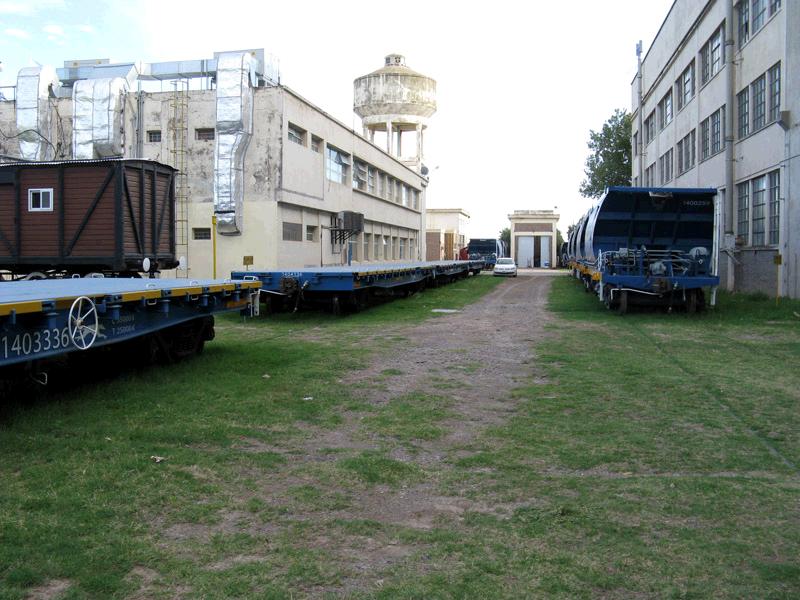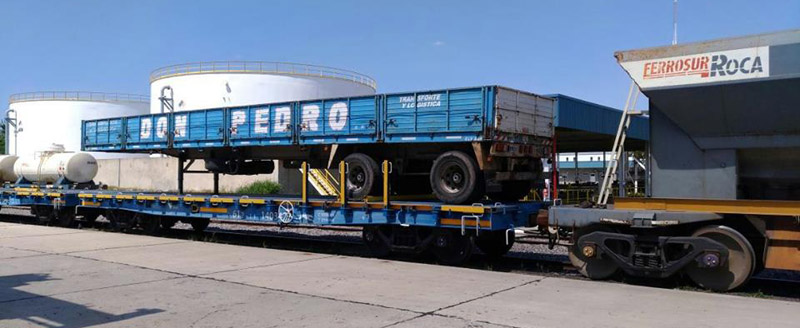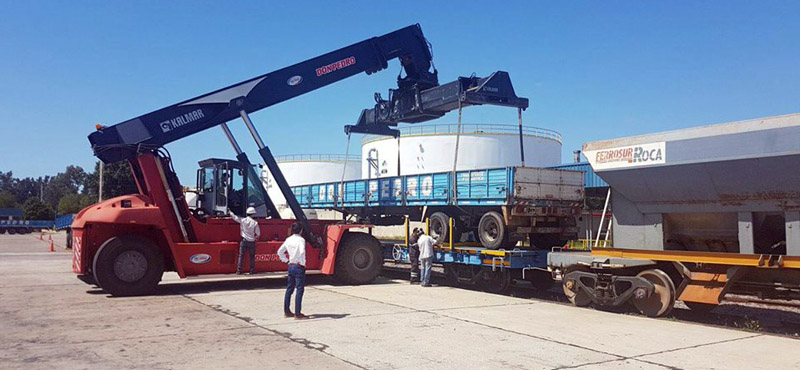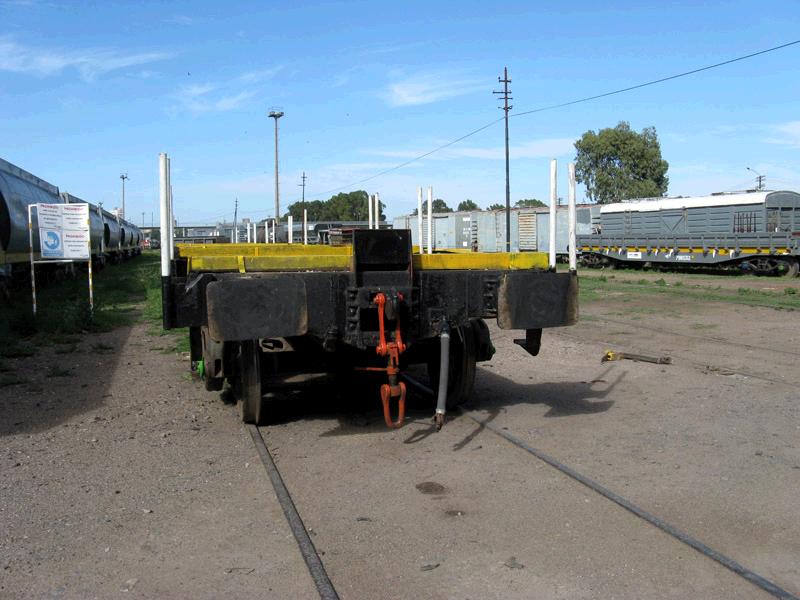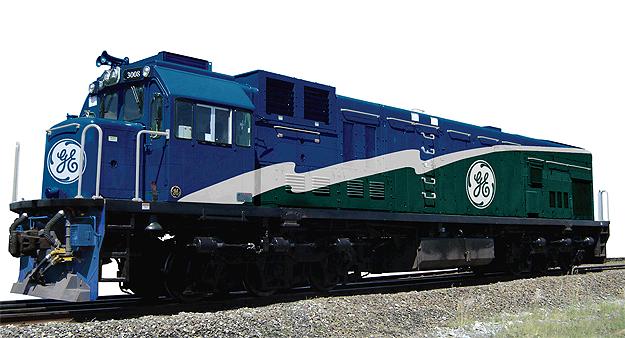 |
|||||||||||||||
 |
|||||||||||||||
 |
|||||||||||||||
 |
|||||||||||||||
The proposed potash line While most of the lines on this web site had their origins in the 20th century, one or two date from the 19th. However, this one is unusual, as its conception was in the 21st century, though it has not yet come to fruition and now (2018) is most unlikely to. A news item in May 2010 first alerted us to a proposal affecting Rincón de los Sauces in the north of the province of Neuquén, for a railway to carry potash (potassium chlorate) from there to Bahía Blanca (1). Details given then included a bridge over the Río Colorado of spans totalling 250 metres, 21 km of line in the province of Mendoza, 187 km in Neuquén and 156 km in Río Negro to a junction with the existing line to Zapala at Cervantes. Trains were to be of 86 wagons, double headed, conveying 5,074 tonnes of material totalling 2.4 million tonnes a year. We very much assumed that it was like the dozens of proposals for railways in Patagonia over the last century plus, ie. wishful thinking rather than a firm proposal. The promoter of the project, now commonly known as the Ferrocarril Potasio Río Colorado, was Vale, a vast Brazilian mining conglomerate, although the initial work was carried out by another mining giant Río Tinto. Very much later an environmental assessment was found, prepared in 2007 (2), which gave interesting details of the railway, by then proposed to join the exiting network at Km 1218 on the branch line from Cipolletti. The trains were to be 54 wagons long, each wagon being of 88 tonnes capacity, and carried on six wheel bogies. Fast forward to January 2012, by which time the proposals for the railway had altered and it would now have the junction 4 km west of Chichinales. The reason for the change of route would appear to be the advantages of constructing, and subsequently operating, the line clear of the populated highly productive irrigated areas from Cinco Saltos to Villa Regina. A map showing how the line would have crossed the open steppe is below (3).
A regional newspaper, the Diario Río Negro, reported on 24 January 2012 (4) that work begun on clearing the ground at the junction to allow the contractor to start work. It also became clear that the line would stop short of crossing the Río Colorado to reach the site of the mine and that the mineral would be conveyed between the mine and the railhead by a covered conveyor belts system. By March, a TV channel (5) was reporting the start of earthworks on site at the junction to the west of Chichinales, and in May, the press (6) was reporting that the fourth load of rails, some 7,434 tonnes, from Ceuta in Spain, was being unloaded at Puerto Galván (the old Bahía Blanca & North Western Railway's port in Bahía Blanca) and that a further three loads were expected. In the middle of June the press in Bahía Blanca (7) was reporting the arrival of a ship from Hamburg with seven track machines from Plasser & Theurer in the shape of three SVM 1000R track laying machines, two PBR 500 ballast regulators and two STC SL tamping machines, all ordered by the main contractor for the railway works Skanska. In September, in addition to the recording of the arrival of a further 5000 tons of rails from Europe, we gain some technical information from the local press (8). The rails would be welded into long lengths and mounted on pre-cast concrete sleepers rather than the traditional ones of quebracho. The following views were posted on a blog page on 20th June 2012 (9) and show the two ballast regulators loaded on lorries, part of a track-laying machine being loaded, and a stock pile of new rails.
More recently, at the end of September 2012, the Puerto de Bahía Blanca published a number of photos of wagons being unloaded on the 20 and 21 of that month. Helpfully there were notice boards displayed, showing that 67 flat wagons and 31 hoppers were in the consignment, built by the Qiqihar Railway Rolling Stock Company of China. The wagons are air braked, and fitted with knuckle couplings, unlike the usual buffers and screw couplings used by Ferrosur Roca. The following data is conveniently provided on the notices attached to the wagons: flat wagons – 16.13 metres long by 3.24 metres wide (about 11 feet!) with a tare of 24.9 tonnes; the wagon markings show that they have a load capacity of 55 tonnes and a tare of 25 tonnes; hoppers – 11.13 metres long by 3.26 metres wide with a tare of 23.0 tonnes; the wagon markings show that they have a load capacity of 56 tonnes and a tare of 23 tonnes. The total wagon weight suggests that the line has been designed for use by 20 tonne axle load vehicles. The photo shows one of the hoppers on the track alongside the ship at Berth 5 in Puerto Galván.
Here, outside the Spurr diesel locomotive workshops, are four of the hoppers. Note how unlike the other broad gauge rolling stock they are fitted with automatic knuckle couplings.
An end view of one of the hoppers showing the air reservoir for the operation of the hopper doors and the additional air hose (above the floor) for its compressed air supply.
A view of the lettering applied to each vehicle – At the top is the owner-operator's name and logo; beneath that is the Ferrocarriles Argentinos greyhound denoting that the running gear is compatible with higher speeds, with next to it the pictogram indicating that the wagon is air-brake fitted; the significance of the next line of figures is unknown; while the bottom line contains the vehicle number, the first three digits of which represent the wagon operator and the remaining four the serial number; on the same line in smaller figures are C(arga) and T(ara) the wagon load capacity and tare weight, both in kilos.
On an adjacent siding are a few of the flat wagons for rail transport.
In January 2018, news came out that these plataformas had been hired by Vale to the national rail authority for use in an experiment in developing a piggy-back service to Bahía Blanca. The two shots are from a press conference announcing the experiment. (9A) The plataforma uses its knuckle coupler to couple up to the Ferrosur Roca hopper wagon which is presumably being used as a converter wagon. Thanks go to Héctor Guerreiro of Bahía Blanca for drawing our attention to this news.
This is how it is intended to load the semi-trailers using a mobile container handling machine.
It is perhaps opportune to comment here on the couplings. It has been the Government's policy since 1909 that all railways use automatic couplings [See Appendix 21]. The British owned railways successfully ignored this, and it was not till the major re-equipping of Ferrocarriles Argentinos in the 1970s that a start was made by making provision for automatic couplings in all new wagons built. The process was taken a stage farther by making up rakes of wagons with buffers only at the ends of the rakes. In service they proved unsuccessful due to unintended uncoupling when running, so much so that buffers were then fitted. Wagons of that era may be recognised by the deep buffer beam and the central hole for the automatic coupling as seen on this container wagon which was photographed in the wagon repair shops at Ingeniero White in 2014.
In early 2015 there was still no news of what was to happen. The wagons continue to lie in store at Talleres Spurr, though they are moved a short distance every two weeks to ensure that the bearings don't seize. What has become of the track machines is not known. The news about the locomotives at August 2012 was the imminent arrival of the first of the nine 3.000 hp locomotives which will operate the service (10). These were being built in Brazil by General Electric of class C, a generic class of light versatile locomotives, which have been supplied to diverse places including Colombia, Nigeria and Jordan. Since then they have just “disappeared”. Then in June 2015 the following posting appeared on the World Diesel Locos Yahoo Group — "CVRD-Rio Colorado Project (Argentina), and CVRD-Mozambique Coal Project, are the same locos. Vale abandoned the Argy potash project, and departed the country. Spiraling inflation had made the investment untenable. Only 9 locos had been built, GE converted these to 3’6”. Mozambique numbering 9150-9158 " This is a builder's photo (11). However it should be noted in this view that the loco is vacuum fitted, not air braked as would have been supplied here.
Technical details of the generic class have been obtained from the website of Sheltam in South Africa (12), which uses some on the 3'-6” gauge. Some data appears below: Model: C30-EMP While the Vale branch line has ground to a halt, clearly some work had been done at Otto Krause, the intended junction some 4 km west of Chichinales, as can be seen in this view accompanying a newspaper article of 21 August 2014 bemoaning the fact that the worked had been paralysed for two years (13).
Sources 11-2-2018 |
|||||||||||||||
Main pages
Appendices
Chapter 3
The BAGSR's route to Neuquén



